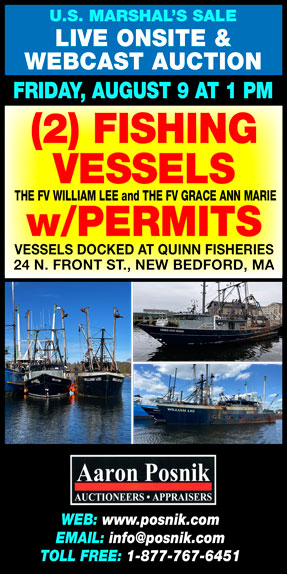Let’s start with situational awareness.
It is my sense that most fishermen either naturally have, or seem to develop, excellent situational awareness skills.
They have keen eyes and ears for non-normal situations – whether it be a change in the sound of their boat engine, the sense that another vessel is approaching through the fog, or even subtle changes in fish behavior.
This awareness allows fishermen to take in and process information about their surroundings – often without even realizing that is what they are doing.
 This is a good thing.
This is a good thing.
It probably gives fishermen an innate leg-up in many situations.
Looking beyond fishermen, it has also been shown that some people (including fishermen, perhaps) have heightened situational awareness about their social environment – keen instincts regarding people and their behavior.
Others may have a special awareness for their physical environment – an extra sensitivity to sounds or movements.
One researcher, Endsley in 1995, crafted a definition of situational awareness that has three components:
• First, perception of the environment;
• Second, comprehension of the situation; and
• Third, projection of the future situation.
Other researchers offer similar definitions.
I think we all know that our situational awareness can be challenged and disrupted during times of stress.
As good as our situational skills might be, we can lose focus in stressful situations. And, we can lose the perception, the comprehension, and/or the projection of the future situation.
Part of the reason for training and drills is to substitute an “automatic” or “learned” response for that degree of situational awareness we may lose under stress.
There are numerous stories, both light and tragic, of incidents that attest to this loss of situational awareness.
On the somewhat lighter side, some years ago a man in Boston parked his car in his date’s driveway, and while he was saying good night at the front door (and temporarily unaware of his broader circumstances), the stick-shift vehicle rolled down the driveway, across multiple lanes, and into the river. Not good.
But it is the potential for tragic consequences that we want to focus on here.
The Coast Guard recently released Alert 04-19, titled “Confined Spaces: Silent and Invisible Killers.”
The notice was occasioned by an activity in which a crew of 10 was working on a docked mobile offshore drilling rig, getting it ready to be shipped to a ship-breaking unit.
When they got to the fourth leg of the structure, they were unable to clean it out using the same technique they had used for the previous three.
The crew had to resort to placing a portable pump inside the drill rig leg.
Seven of the ten crewmen on the unit were working on the pumping effort.
After five of them left for dinner, one of the remaining crewmembers entered the fourth rig leg to check on the pumping. The second crewmember on duty entered the leg to check on the first person, found him collapsed, and exited the leg.
This second crewmember then informed two of the crew who had returned, and a third crewmember entered the space without protective gear.
When the captain, who had been informed, arrived on the scene, he, the ship superintendent, and the fitter entered the space.
They found two crewmen collapsed on the floor, then the fitter was overcome and also collapsed.
According to the Coast Guard bulletin, the captain and ship superintendent were helped out by the rigging master who had secured and used a SCBA (Self-Contained Breathing Apparatus).
In this incident, three crewmembers were fatally overcome; the captain and ship superintendent were airlifted to the hospital.
The Occupational Safety and Health Administration (OSHA) definition of confined space has three primary elements:
• Being large enough for an employee to enter and perform work;
• Has limited or restricted means for entry or exit; and
• Is not designed for continuous occupancy.
The drilling rig leg satisfied this definition.
The third part of the definition pertains to ventilation and the availability of oxygen for breathing, the over- abundance of one or more toxic gases, and/or the presence of other health and safety risks.
In this case, the gas-powered pump they had lowered into the space was using-up oxygen and emitting carbon monoxide.
In the marine environment, our boats – whether for fishing or fun – have several confined spaces: a galley, engineroom, fish hold, or bilge, for example.
Most of the time, below-deck galleys and enginerooms have fans that are turned on when the crew boards the boat.
But the fish hold and bilge are a different story.
If these confined spaces are not kept clean of fish debris, bacteria build up that are, at first, aerobic – that is they need and use oxygen to live.
But once they use up the oxygen in the confined space, these bacteria become anaerobic – they no longer need oxygen, but instead use carbon dioxide and give-off hydrogen sulfide.
Hydrogen sulfide is extremely toxic to us humans in very small amounts.
It is true that hydrogen sulfide smells like rotten eggs, so we would expect we could notice it in time to leave the space. However, hydrogen sulfide anesthetizes our olfactory (smell) sensors, and we very quickly think the gas has dissipated.
But it hasn’t.
The take-home message here is this: confined spaces are dangerous.
Entry into a space where asphyxiation or other health or safety hazards are present requires a permit; those going in must have SCBA, as well as confined space entry, training.
The Coast Guard bulletin mentions “sources indicate” that over 50% of coworkers who enter a confined space to assist a collapsed colleague die.
This drilling rig situation comes close to supporting that percentage. Of the five people who entered to help the first crewmember, two died and three were affected but survived.
Finally, back to situational awareness. When confronted with a confined space, we should stop, take a breath and engage our awareness:
• What do we notice;
• What might that mean; and
• What are the possible consequences.
Ann Backus, MS, is the director of outreach for the Harvard School of Public Health’s Department of Environmental Health in Boston, MA.
References:
Endsley – Modeling Human and Organization Behavior (National Academies Press) https://www.nap.edu/read/6173/chapter/9
US Coast Guard Alert 04-19 – https://www.dco.uscg.mil/Portals/9/DCO%20Documents/5p/CG-5PC/INV/Alerts/0419.pdf







